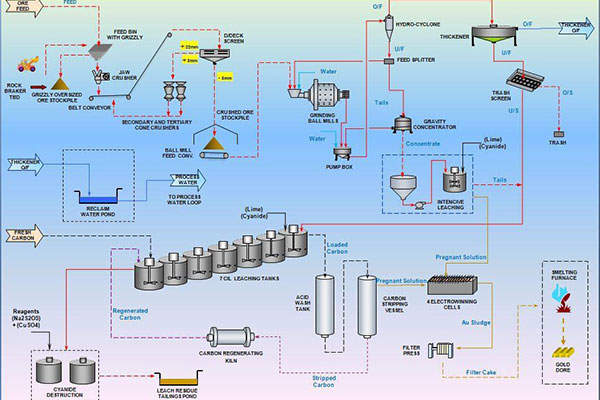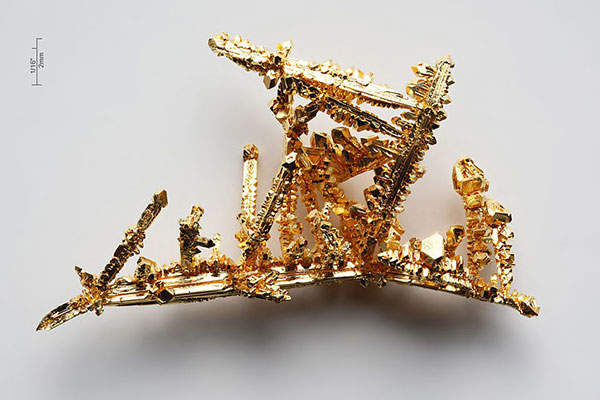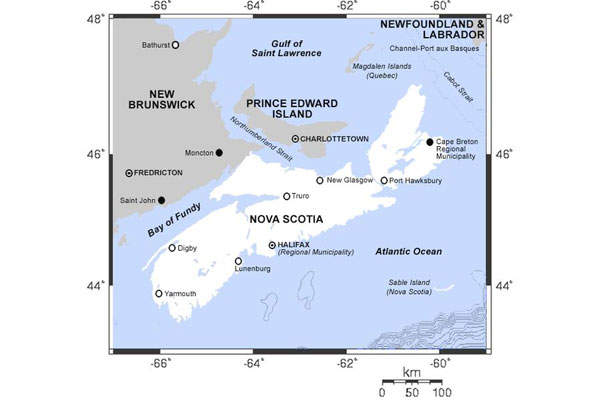Atlantic Gold’s Moose River Consolidated (MRC) Project involves the combined development of the Touquoy gold mine and the neighbouring Beaver Dam gold mine, both located in Nova Scotia, Canada.
The Touquoy gold mine is located approximately 60km northeast of Halifax, whereas the Beaver Dam gold mine is located 22km east of Touquoy. The Touquoy property covers an area of 1,760ha in Mineral Lease ML11-1 and Exploration Licence EL10377 whereas the Beaver Dam mine is located within Exploration Licence EL50421, which covers an area of 569ha.
The project’s feasibility study was completed in July 2015, start of construction is anticipated in May 2016 and first production is expected in 2018.
The Canadian gold project is estimated to have a production life of nine years and involve a capital cost of approximately $160m.
The Touquoy mine will be developed first, while the Beaver Dam development will commence after completion of five years of mining at Touquoy.
MRC Project geology and reserves
The Touquoy and Beaver Dam mines are situated along the same geological trend as Atlantic Gold’s two other deposits, Fifteen Mile Stream and Cochrane Hill. The deposits are hosted within the same stratigraphy of the Meguma Terrane, which is primarily a sequence of Cambro-Ordovician sandstones and mudstones.
At Touquoy, mineralisation is disposed around the anticlinal hinge, whereas that at Beaver Dam is primarily disposed in a tabular zone within the southern limb of the anticline. Gold is distributed throughout quartz-veined grey argillites (shales) at both the locations.
The two mines are estimated to hold combined proven and probable reserves of 760,000oz of gold graded at 1.44g/t.
Mining and processing at Atlanta Gold’s gold mines
The deposits will be developed using conventional open-pit mining method integrating drill, blast, load and haul activities using a leased production fleet primarily including diesel-powered down the hole (DTH) drills, diesel-powered reverse circulation (RC) drills, 4.5m³ bucket-sized diesel hydraulic excavators, 7m³ bucket-sized wheel loaders, and 64t payload rigid frame haul trucks for production loading.
The Phoenix gold project involves development of an underground mine in the Red Lake district of Ontario, Canada, one of the largest gold producing countries in the world.
The processing facility will have a treatment capacity of two million tonnes a year, with a gold recovery rate of 94%. It will be a conventional gold mill operation integrating a three-stage crushing and ball milling to a grind of 80% passing 150 microns, with cyclones used in closed-circuit grinding.
The processing plant will further integrate a centrifugal concentrator, cyanidation facilities, carbon-in-leach (CIL) circuit, pressure zadra circuit, electro-winning circuit and a smelting facility.
At Beaver Dam, the ore will undergo primary crushing before being conveyed to the Touquoy processing facility by trucks. Tailings from the treated ore at Beaver Dam will be stored in the mined-out Touquoy open-pit.
Infrastructure for the Nova Scotia gold mines
The electrical power required for the Touquoy site will be sourced from a substation located within the neighbouring Caribou mines through a 13km-long, 25kV overhead line, whereas the Beaver Dam site will be provided with temporary diesel generators. Process water will be sourced from Scraggy Lake, and the tailings management facility.
The Touquoy site will house an administration office, a control room complex, a mill maintenance office, a process plant building, a reagent storage building, a laboratory, a workshop and warehouse, a main plant motor control centre room, and an effluent treatment plant. Temporary facilities such as workshop, office and change room facilities will be built at Beaver Dam.
Upgrades of approximately 20km of existing roads, three bridges and a number of culverts will be performed to convey the crushed ore from Beaver Dam to the Touquoy site. Accommodation facilities will not be required at both sites as the workers will majorly be employed from the neighbouring areas.
Contractors involved with the Canadian gold mining project
The project’s feasibility study was performed by Ausenco Engineering Canada, who was assisted by Moose Mountain Technical Services (MMTS) for the mine design, pit optimisation and the compilation of the economic results.
Stantec Consulting provided the tailings management facility design, while resource modelling was conducted by FSSI Consultants (FSSI) and the environmental and permitting aspects were executed by Conestoga-Rovers & Associates (CRA).






